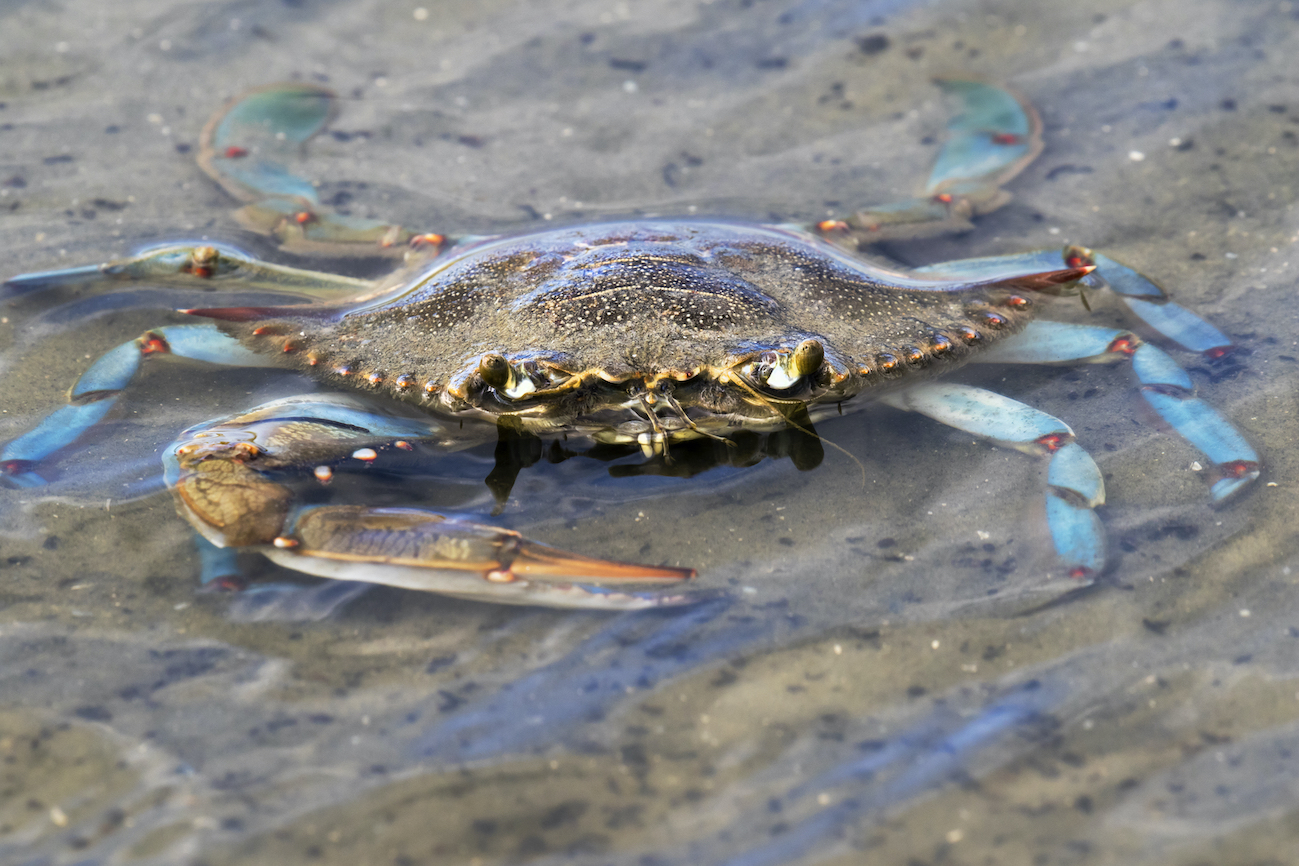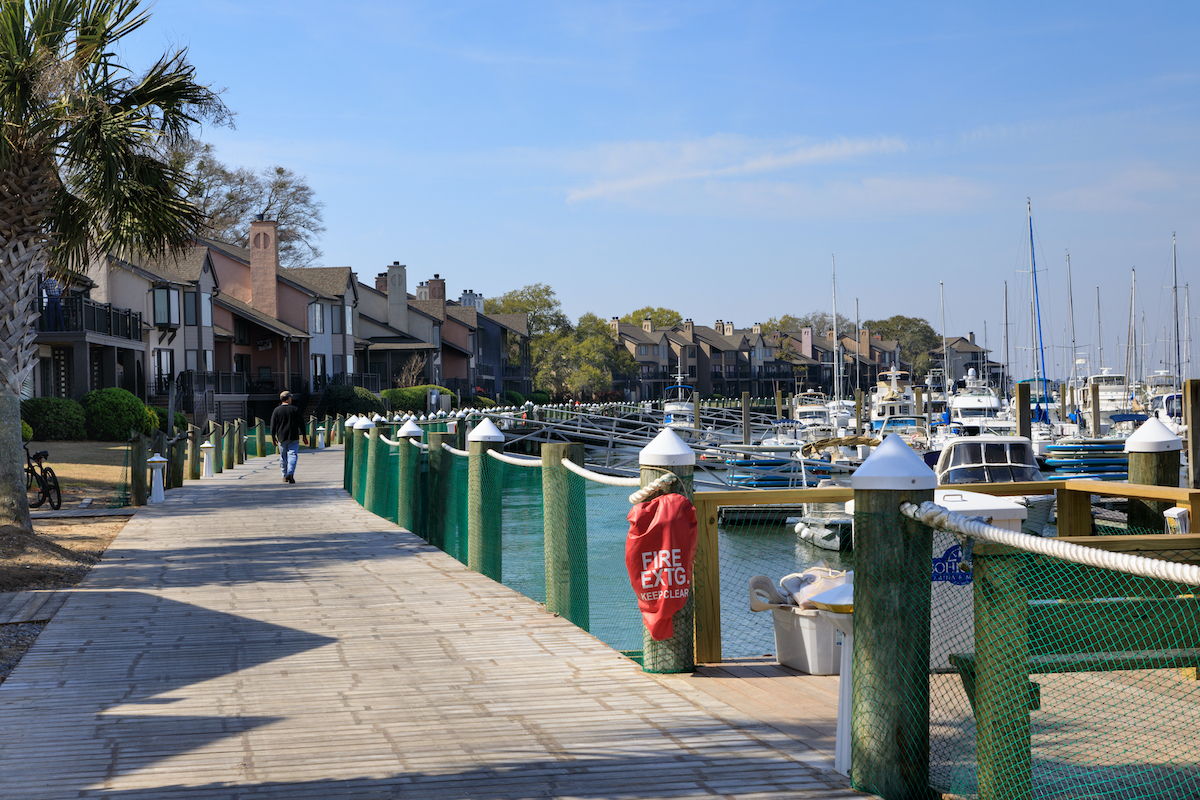Dinner in a Pinch: Crabbing on Seabrook Island
What You Need to Know About Crabbing on Seabrook Island
There are a hundred ways to have socially distant fun at Seabrook as a family, including getting the crew together to enjoy some of the freshest seafood the Lowcountry has to offer! Some of the most common South Carolina crabs that we see here on the island are stone crabs and blue crabs, both known for their delicious abundance of meat. Crabbing is a fun and exciting activity that the whole family will love, especially when you are on the scenic tidal creeks of Seabrook Island. Whether you plan to catch dinner in a pinch or choose to catch-and-release, here is our local guide on how to have the best day crabbing:
Familiarize Yourself With Our Local Crabbing Laws
In South Carolina, crab season is year-round, which means you will always have the freshest catch of the day! According to Mr. Charles Moore, crabs are most abundant in our tidal creeks and rivers from late spring through the summer months. Mr. Moore was formerly a supervisor with the SC Department of Natural Resources (SC DNR) and is currently a member of the SIPOA Lakes & Wildlife Committee.
A South Carolina Department of Natural Resource Recreational Fisheries license is required to harvest fish, shrimp, oysters, or clams. This documentation can easily be obtained from most of our local hardware and tackle stores, at a minimal cost:
Island Residents – $11.00 annual or $5.00 for two weeks
Non-Residents – $35 annual or $11.00 for two weeks
Lifetime Senior License (Age 64+) – a one-time fee of $9.00
This license covers recreational fishing, crabbing, oystering, clamming, and shrimping. However, a license is not required to harvest blue crabs or stone crabs as long as you use no more than two crab traps, three drop nets, three fold-up traps, or three hand lines with a hook and single bait per line.
Crabbers should keep in mind that blue crabs must be at least 5 inches across from point to point in order to keep and cook them. Only stone crabs with two claws can have one claw removed, which must have a forearm of 2 ¾ inches in length. It is unlawful to possess any stone crab body dead or alive in the state of South Carolina. Additionally, female crabs with eggs, both blue and stone, are called sponge crabs. These must be returned to the water to continue to preserve our beautiful marsh habitat.
Pick the Perfect Spot & Gather Your Crabbing Supplies
The best place to go crabbing is off a dock into a tidal creek. A favorite spot of our local Seabrookers is the island crabbing dock, located near the Creekwatch and Duneloft communities. You can easily find it on our interactive map. If you are up for a little bit more of a challenge, you can try catching our South Carolina crabs from the creek bank with a net.
Be sure to check the weather and tide charts before you head out. Any time will work, but you will likely catch the most crabs if you go when the tide is either coming in or out, for example, 2-3 hours before high tide and 1-2 hours after high tide.
When you go crabbing, drop nets, dip nets, crab traps, and baited lines or strings can all be used to successfully catch blue and stone crabs. You will likely want to bring 3 or 4 lengths of thin rope or strong string, a fishing net on a long pole, and a cooler. Be sure to grab some snacks and other supplies such as snacks, sunscreen, fold-up chairs, and water.
Catch Your Own Dinner: Crabbing Near Charleston, SC
The marsh around Seabrook Island is extremely healthy. Our pristine ecosystem is consistently monitored by the state of South Carolina, as it is considered the “gold standard” for marsh water/mud in coastal South Carolina. With that being said, you won’t have to worry about getting a bad catch while you are crabbing!
Or, if you prefer to venture out, Bohicket Marina is a great place for your charter and boat rental needs. Morning and evening tours are available for those who simply want to take in the view of the island’s natural beauty from the water. Other tours and private lessons can be acquired as well by calling 843-768-1280. Please keep in mind that daily tours and other options must be placed 24 hours in advance, and policies are subject to change based on local COVID precautions. Always check with your guide before booking. We recommend off-shore excursions for more experienced crabbers, as you probably won’t have much success with the crashing waves making it almost impossible to pull crabs in.
Once you successfully catch a few crabby critters, you want to make sure that they are kept in a cold cooler, but not in a basket or bucket, or directly on ice. Crabs tend to spoil very quickly, so never cook or eat a crab that is not alive when you clean it or place it in the pot.
The most convenient (and delicious) way to cook crabs is to boil them in a big pot of water. You can also add lots of Old Bay seasoning to your pot. Make sure to always clean the crabs before eating, however, this step can be completed before or after boiling.
Crabbing Tips & Tricks from our Local Seabrookers
Our local fisherman and crabbers recommend choosing a sunny day since you will most likely be on the water for an extended period of time. You can also incorporate a family picnic into your island expedition!
Try using a net and cheap line with a baited hook on it, rather than a crab pot. These can be found at any of our nearby convenience stores, as well as SeaCoast Outfitters in Freshfields Village. Make sure to take something to put the crabs in once you catch them! You can also try using a trap, which is a wire meshed box that allows crabs to enter, without letting them escape. This can be advantageous because it allows you to catch multiple crabs.
Next, you will want to get some bait from the store, such as prepackaged chicken legs from the local meat counter at Newton Farms. Pro tips: there’s one thing that crabs love more than anything else in this world: frozen chicken necks and backs. Use this as your secret crabbing weapon. You can also ask the butcher for any available cheaper quality chicken parts since crabs aren’t picky eaters! Additionally, if you use the “chicken necking” method with three or fewer hand lines in the water, you won’t need a South Carolina Saltwater Recreational Fishing License.
Tie the chicken onto the end of the string and throw the bait out into the creek or let it drop off the side of the dock. Now, wait for a tug. It helps if you have one person very slowly and gently pulling the crab towards the top of the waterline while another uses the net to scoop and collect them. This ensures that the crab is firm in taking its bite. If the crab gets a sense that you are trying to catch it, it will let go of that delicious bait and head back home. Next, you will want to measure the size of the crab, releasing anything under 5 inches.
Although it isn’t difficult, it does take a lot of time and effort to catch these South Carolina crabs. You will also need quite a few for two full adult meals. After cooking and de-shelling the crab, you will most likely get between 2-4 tablespoons of meat from each crab. But, the tasty reward is well worth the wait!
Most importantly, remember to take it easy on the crab dock, with a line in the water. Sit back and enjoy time well-spent with your loved ones. Crabbing is really more about the experience, but it does come with a yummy treat! We know this low-stress activity will be a great way for you to spend any day soaking in Seabrook Island’s beautiful waterscapes.
The private coast barrier island of Seabrook is immersed in natural beauty, with lush maritime forests, miles of pristine coastline, and 1,140 acres of tranquil marsh habitat. Seabrook Island is home to an Audubon International Certified Sustainable Community that is brimming with diverse Charleston wildlife, including more than 30 species of reptiles, 80 bird species, and a variety of mammals such as bobcats, red and gray foxes, and white-tailed deer. Various species of marine life also call our island home, including the loggerhead sea turtle, bottlenose dolphins, and, of course, crabs! Before giving us a visit, stay up to date on our current hours of operation and if you have any additional questions don’t hesitate to give us a call.



